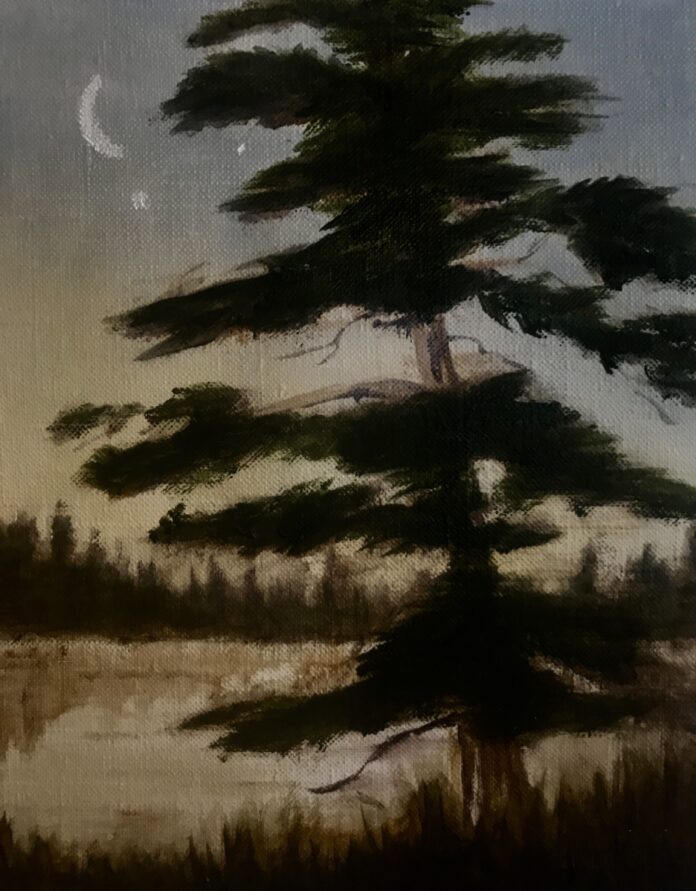BY LESLIE REGO

I woke up this morning to a wondrous sight. The crescent moon, just the slimmest of slivers, was hanging in the astronomical dawn, the time of the early morning when one can just begin to make out a few landmarks. A short distance below the bottom point of the crescent was Venus, as bright in the sky as the crescent moon. I was astonished and excited. I had no idea this was going to happen and by pure chance I was awake and had the honor of witnessing this beautiful event.
As I watched the moon and Venus, I spied another star a bit to the right (west) of the pair. Later, I realized that I was seeing Spica, Virgo the Maiden’s brightest star. I stood and watched as the morning passed through nautical dawn when there is adequate sun for some objects to be distinguishable and civil dawn when the sun is just below the horizon and there is sufficient light to be able to see with ease. Through all of these phases, the moon and Venus continued shining brightly. Spica slowly faded.
Spica is a fascinating star. It is referred to as a 1st-magnitude star, which signifies that it is one of the brightest stars in the night sky to the naked eye. The dimmest stars to the naked eye are 6th magnitude. Spica is really two stars separated by about a 10th of the distance that separates the earth and the sun. Each star burns hotter than the sun. The stars omit huge amounts of ultraviolet radiation, making them appear blue-white. When the star is low in the sky, it can appear to be a blinking blue light. The twinkling is caused by turbulence in the earth’s atmosphere.
Spica comes from the Latin word for “ear”; it refers to an “ear of wheat.” Both the star Spica and the constellation Virgo the Maiden are associated with the Greek goddess of harvest, Ceres.
Throughout December, both Spica and Venus will be shining brightly. Venus will remain in the morning sky until mid-August, 2019. As the year 2019 progresses, Venus will gradually become dimmer. Even so, Venus at its dimmest ranks as the third brightest celestial body after the sun and the moon!
Around mid-December, along with Venus we will be able to see both Mercury and Jupiter before sunup. So now is the time to wake up and enjoy early-morning sky watching to observe a lineup of beautiful planets!
Leslie Rego is an Idaho Press Club award-winning columnist, artist and Blaine County resident. To view more of Rego’s art, visit leslierego.com.



